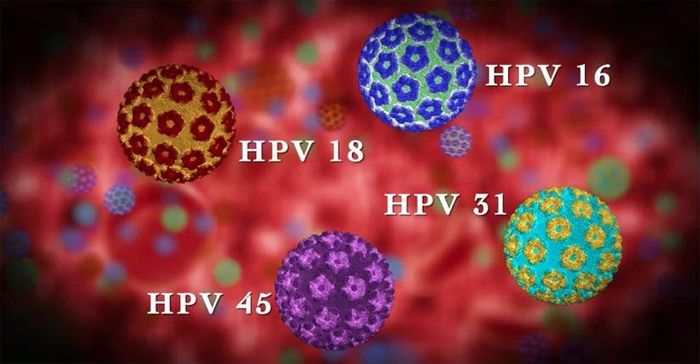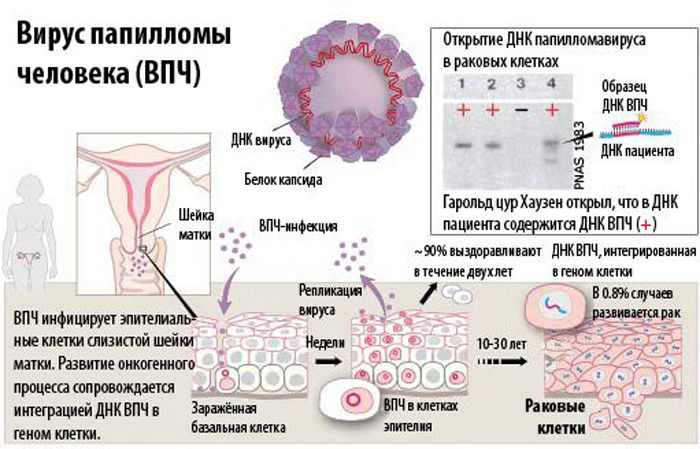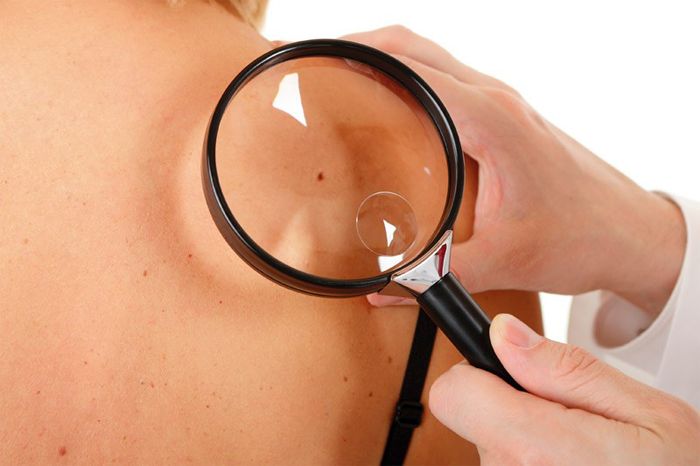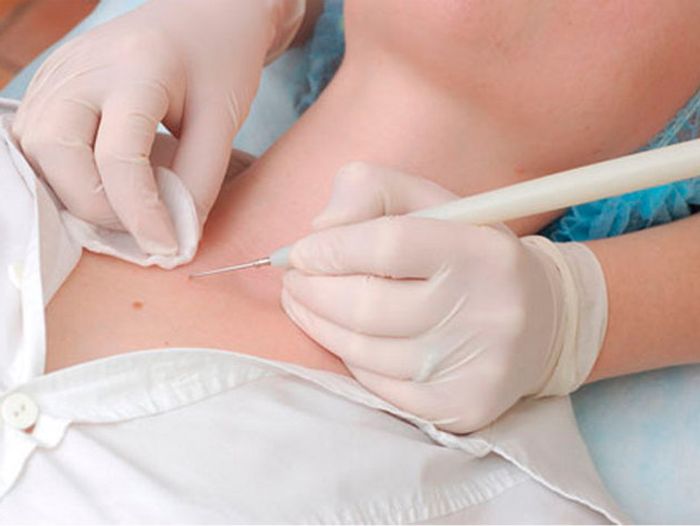The human papillomavirus is infectious and is considered one of the most common at the moment.
Most often, HPV occurs in women and poses a particular danger to women’s health. What are the main causes of the development of the disease, how to avoid it and how to treat it – we will learn further.

Содержание:
Papillomavirus in women: causes
Papillomavirus infection in women can develop for the following reasons:
- Neglect of hygiene rules when visiting public places – beaches, banks, shops, etc.
- Refusal to use contraceptives.
- Direct contact with a carrier of the virus.
- Frequent visits to places with a high level of humidity (pools, saunas, etc.)
People from the risk group are especially susceptible to the penetration of the virus into the body: for example, when the body is weakened, depressed or stressed. Also, the abuse of alcohol and cigarettes contributes to the development of infection.
Types of papillomavirus infection
Treatment for papillomavirus in women is not started until the type of infection is determined. From here they choose a set of drugs, methods of effective control, and put forward development forecasts. Doctors know more than 100 types of infection, of which at least 15 pose a real health hazard.
HPV 16 and 18 types
It is the 16th and 18th type of virus that poses a serious danger to the body. They provoke the development of cervical cancer, as well as precancerous pathological conditions in 70% of cases. There is a specially developed vaccine to protect the body against these types of HPV: it is approved in most countries of the world and is used even at a young age from 10-12 years.

The danger of papillomavirus infection
The danger of papillomavirus infection in women can manifest itself in the following:
- weakening of the immune system;
- acute dysplasia of the cervix;
- bleeding from growths;
- the appearance of papillomas and condylomas all over the body;
- cervical erosion;
- development of cervical cancer.
Since the consequences of the disease are quite serious, after the diagnosis, experts begin the treatment procedure and do not recommend postponing it.
Transmission routes
There are two known ways of transmission of the HPV virus in women :
- Sexual. With unprotected sexual contact, the virus can easily be transmitted through the carrier, which, as a rule, is a man. In this case, the type of sex does not matter: the infection is also transmitted during anal or oral sex.
- Vertical. In this case, the virus is transmitted during childbirth from mother to fetus. This does not happen in 100% of cases and such a situation can be avoided with proper pregnancy management.
Sometimes, if a person is at risk or his body has insufficient immunity, even precautions cannot protect against the disease.

Papilloma virus in women: symptoms
Symptoms can be both external and obvious, and hidden, which, as a rule, are difficult to notice. The main signs of papillomavirus infection in women are:
- the presence of papillomas and condylomas on the body;
- dysplasia;
- reduced immunity;
- squamous metaplasia;
- lethargy;
- chronic cervistitis.
Not all symptoms of HPV in women can be detected on their own: as a rule, women turn to a dermatologist with complaints of condylomas and papillomas and then find out that HPV was their cause.
It is important to note that neoplasms begin to appear on the body only 3-4 months after infection. Mostly they occur in the genital area, on the labia minora, on the chest or under it.
Diagnostics
The determination of the presence of HPV in a person in a clinical setting is carried out in the following order:
- First, the doctor conducts an oral survey, finding out if the woman has the primary signs of infection.
- After that, a visual examination is carried out, however, it can only confirm the features of the development of the disease identified at the first stage.
- PCR method. Polymerase chain reaction allows you to increase the amount of DNA taken in the sample and detect the presence of infection.
- Cytological study. Examining cells under a microscope helps the specialist not only identify the virus, but also determine cervical dysplasia, if present.

If necessary, the doctor determines the presence of antibodies to HPV in the blood. It is not always necessary to carry out all the analyzes. Sometimes, after a visual examination, the doctor gives certain recommendations. An important goal of diagnosis is to determine the type of neoplasms: benign or malignant.
Treatment of HPV in women
The treatment of papillomavirus and recommendations for its organization are determined by the doctor after receiving the test results. We also recommend that you familiarize yourself with the treatment of papillomavirus infection in women, drugs that really help in the fight against infection.
Treatment can be surgical, medical, in rare cases – home, using folk remedies. You cannot prescribe drugs for yourself: at best, they will simply be ineffective. At worst, the situation will get worse.

Can it be cured permanently
The virus that appears in the early stages is very difficult to recognize. As a rule, treatment is delayed for a long time. At the same time, we note that it is impossible to completely get rid of the virus : the disease affects the body once and remains in it for life.
You can only cope with its manifestations in the form of genital warts and papillomas. After getting rid of the primary signs, the girl is prescribed special drugs that will have to be taken in courses throughout her life in order to avoid the negative consequences of the disease.
In rare cases, when HPV occurs at a young age, you can get rid of it. There are cases when, without any pills, the virus leaves the body itself. This is due to the fact that the body is strong and it is enough to expel a strong infection. In adulthood, this can no longer happen.
Treatment regimen for HPV in women
Human papillomavirus disease in women is usually treated according to the scheme below:
- Removal of existing external manifestations of the virus. Initially, the doctor advises the girl on the methods of removal, together they choose the appropriate option according to the patient’s current state of health and money. The price of removal usually depends not only on the chosen method, but also on the size of the build-up and its location.
- Appointment of a course of medicines to combat the virus.
- Conducting a course to strengthen and stabilize the immune system.
The choice of suitable drugs is made only after a preliminary diagnosis. Depending on how strong the virus is in the body, the number of drugs and the duration of treatment courses can be adjusted by a specialist.
In addition, if the neoplasms are benign, then the doctor may allow the removal of papillomavirus growths at home.
Human papillomavirus during pregnancy
Immunity may decrease during pregnancy, which is why the risk of HPV infection increases during this period. The reasons can also be increased sweating, changes at the hormonal level, rapid weight gain and other processes associated with pregnancy. At the first suspicion of a viral infection, it is necessary to consult a specialist.
If necessary, tell your gynecologist early on that you have HPV. In this case, pregnancy planning will be built in a sparing special mode.
In addition, if growths appear on the genitals, then a caesarean section will be mandatory. In the presence of HPV, a woman needs to lead a healthy lifestyle and maintain immunity throughout the entire period of pregnancy.
Prevention of papillomavirus in women
To prevent infection and alleviate the situation if the patient already has the virus, it is important to take the following preventive measures:
- give up cigarettes and alcohol to the maximum;
- observe hygiene measures and always wash your hands;
- protect yourself during sex, including anal and oral;
- lead a healthy lifestyle and eat right.
In addition, it is important to carry out activities to strengthen the immune system, as this is the most effective way to prevent the spread of infection in the body. At the first signs of HPV, you should contact a specialist for a diagnosis, because the longer the treatment is delayed, the more difficult it will be later.







